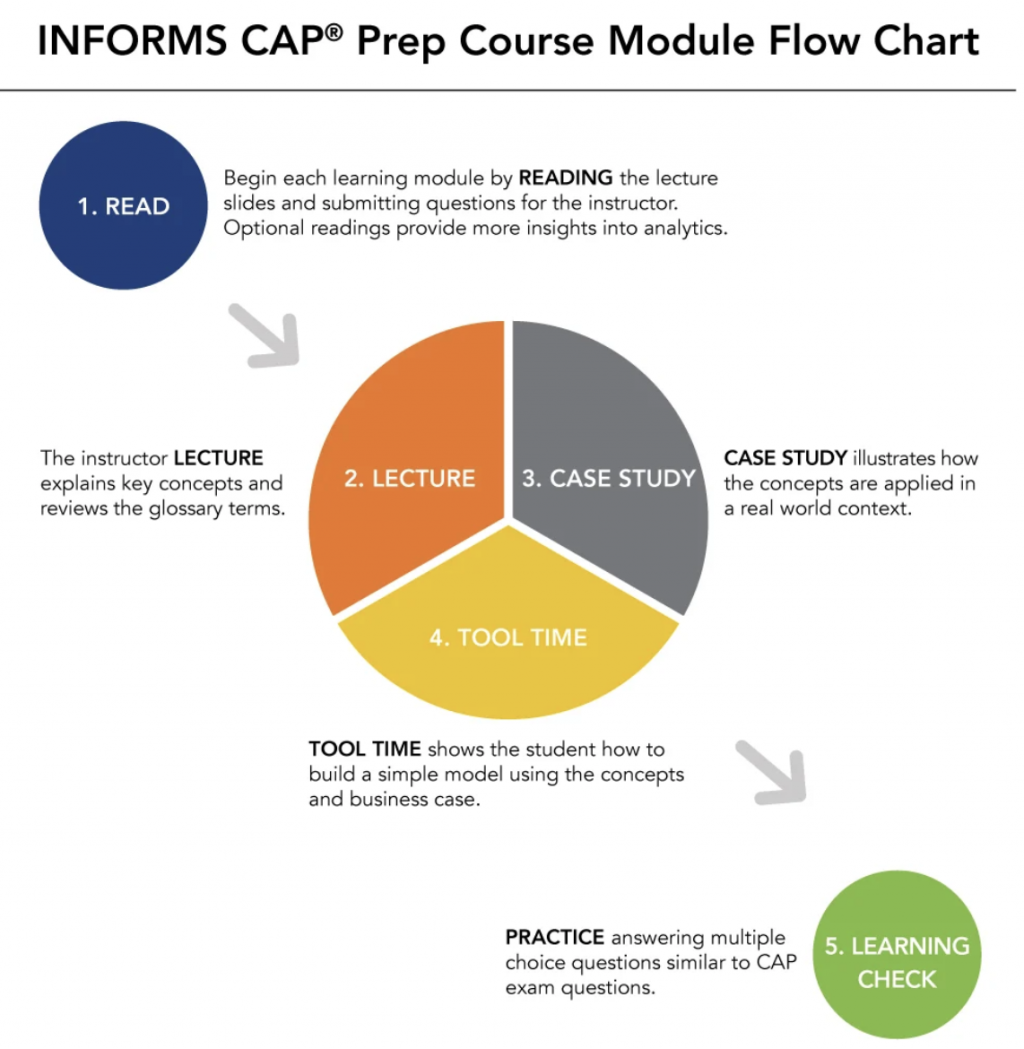
CHAPTER 1: INTRODUCTION TO THE CAP® PROGRAM.......................................................... 7
About the Professional Job Task Analysis.............................................................................................. 9
The Five E’s............................................................................................................................................... 14
CHAPTER 2: DOMAIN I – BUSINESS PROBLEM FRAMING.................................................... 17
What will you learn in this chapter?........................................................................................................ 17
Learning Objectives................................................................................................................................. 17
Key Concepts/Fundamentals.................................................................................................................. 17
Objective 1. Receive and refine the business problem................................................................... 17
Objective 2. Identify stakeholders..................................................................................................... 18
Objective 3. Determine whether the problem is amenable to an analytics solution.................... 19
Objective 4. Refine problem statement and delineate constraints................................................ 19
Objective 5. Define an initial set of business benefits..................................................................... 20
Objective 6. Obtain stakeholder agreement on the problem statement...................................... 20
Summary................................................................................................................................................... 20
Further reading......................................................................................................................................... 21
CHAPTER 3: DOMAIN II – ANALYTICS PROBLEM FRAMING.............................................. 23
What will you learn in this chapter?........................................................................................................ 23
Learning Objectives................................................................................................................................. 23
Key Concepts/Fundamentals.................................................................................................................. 23
Objective 1. Reformulating the business problem statement as an analytics problem............... 23
Objective 2. Develop a proposed set of drivers and relationships to outputs............................. 25
Objective 3. State the set of assumptions related to the problem................................................ 26
Objective 4. Define the key metrics of success................................................................................ 27
Objective 5. Obtain stakeholder agreement.................................................................................... 27
Summary of key terms........................................................................................................................ 28
Summary................................................................................................................................................... 28
Further reading......................................................................................................................................... 28
CHAPTER 4: DOMAIN III – DATA..................................................................................................... 31
What will you learn in this chapter?........................................................................................................ 31
Learning Objectives................................................................................................................................. 31
Key Concepts/Fundamentals.................................................................................................................. 31
Objective 1. Identify and prioritize data needs and resources....................................................... 31
Objective 2. Identify means of data collection and acquisition...................................................... 33
Objective 3. Determine how and why to harmonize, rescale, clean and share data.................... 41
Objective 4. Identify ways of discovering relationships in the data............................................... 46
Objective 5. Determine the documentation and reporting of findings......................................... 49
Objective 6. Use data analysis results to refine business and analytics problem statements...... 49
Summary................................................................................................................................................... 49
Further Reading....................................................................................................................................... 50
CHAPTER 5: DOMAIN IV – METHODOLOGY (APPROACH) SELECTION........................ 51
What will you learn in this chapter?...................................................................................................... 51
Learning Objectives.............................................................................................................................. 51
Objective 1. Identify available problem solving approaches....................................................... 51
Objective 2. Select software tools..................................................................................................... 54
Objective 3. Model testing approaches*.......................................................................................... 59
Objective 4. Select approaches*....................................................................................................... 60
Summary................................................................................................................................................... 60
Further Reading....................................................................................................................................... 60
CHAPTER 6: DOMAIN V – MODEL BUILDING ........................................................................ 61
What will you learn in this chapter?..................................................................................................... 61
Learning Objectives............................................................................................................................... 61
Objective 1. Identify model structures............................................................................................ 61
Objective 2. Evaluate and calibrate models and data..................................................................... 63
Objective 3. Calibrate models and data*......................................................................................... 64
Objective 4. Integrate the models*................................................................................................... 65
Summary................................................................................................................................................... 65
Further Reading....................................................................................................................................... 65
CHAPTER 7: DOMAIN VI – SOLUTION DEPLOYMENT.......................................................... 67
What will you learn in this chapter?...................................................................................................... 67
Learning Objectives............................................................................................................................. 67
Objective 1. Perform business validation of the model.................................................................. 68
Objective 2. Deliver report with the findings................................................................................... 68
Objective 3. Create model, usability, and system requirements for production........................... 68
Objective 5. Support Deployment.................................................................................................... 69
Summary................................................................................................................................................... 70
